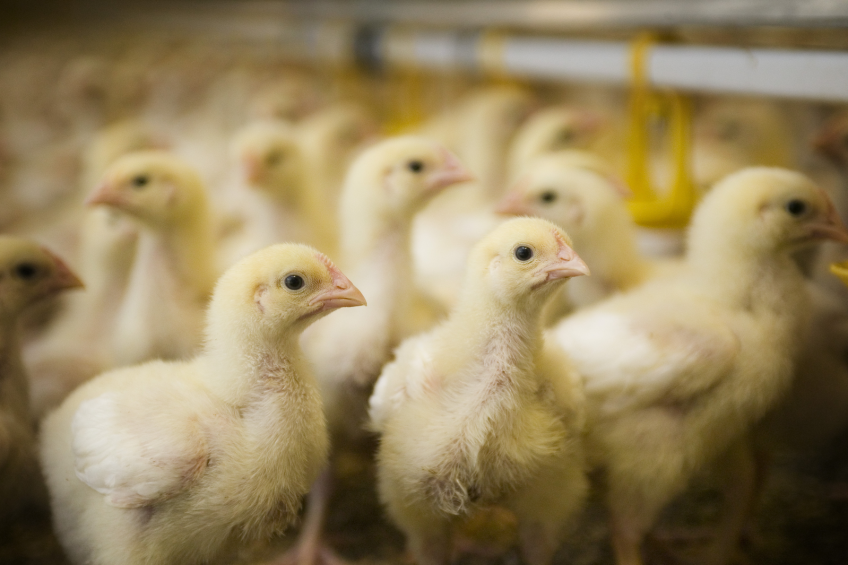6 ways to combat cellulitis in broilers

Cellulitis, a leading cause of carcass condemnation in broilers, represents significant economic losses for poultry producers. Here are several methods to curb its incidence.
Producers can take a number of actions to combat cellulitis on the farm. These measures include promoting feather coverage, monitoring bird density, reinforcing biosecurity, adjusting the timing of vaccinations, updating management practices and ensuring good gut health.
1. Promote feather coverage
The introduction into the market of slow-feathering broiler genetic lines increased the broiler cellulitis problem. Modern broilers have a more prominent abdomen that expose them to more scratches. There are studies showing that feathering at 28 days is the most predisposing factor of broiler cellulitis. So, a good broiler management that supports proper feathering is of great importance. Avoiding an environment that is too hot, especially between 2 and 4 weeks of age, is also helpful to stimulate feathering and thus minimise cellulitis.
2. Monitor bird density
A greater number of birds per pen (higher density) is associated with a higher incidence of scratches which makes birds more vulnerable to cellulitis. This simple relationship (more birds = more scratches = more cellulitis) is very important —especially in farms where bird density is increased without additional feeding and drinking lines which increases competition among birds for feed and water access.
3. Reinforce biosecurity
Poor litter quality is also associated with higher incidence of cellulitis. A wet litter constitutes an ideal environment for bacterial growth. The frequent contact of the bird’s abdomen to the wet litter increases the bacterial contamination frequency and thus, through scratches, the transmission of pathogens from the litter to the bird. Wet litter conditions also result in dirty claws with higher bacterial contamination and are more likely to infect any scratches. Consequently, cleaning and disinfection of barns during the withdrawal period are of great importance. Ensuring a withdrawal period of more than 15 days can also help reduce the incidence of cellulitis.
4. Adjust timing of vaccinations
Conducting broiler vaccinations at the hatchery can contribute to a reduction of total broiler carcass condemnation – including broiler cellulitis – at the slaughterhouse (Paniago M., CEVA bulletin, 2009). Results of a trial conducted in southern Brazil showed that earlier application of the IBDV vaccination, at the hatchery instead of on the farm, reduced most causes for carcass condemnation, especially broiler cellulitis.
5. Update management practices
For sure, an improvement at management level in the farms must be considered. Updating equipment and farm design to fit the needs modern broiler strains in terms of ventilation, feeding and water supply is a must.
6. Ensure good gut health
E. coli, the main agent for broiler cellulitis, is an opportunistic pathogen living in the chicken’s gut that spreads through the faeces onto the litter. A probiotic, or beneficial bacteria, can modulate the gut microflora and reduce the spread of E. coli in the environment. Through competitive exclusion (preventing pathogens from attaching to enterocytes, or intestinal absorptive cells) and the production of natural antimicrobial substances such as organic acids and bacteriocines, these microorganisms make it more difficult for E. coli to replicate and grow. This reduces the spread of E. coli into the environment and, consequently, lowers the probability of E. coli infection through scrapes and skin abrasions. A study conducted by Estrada et al. in 2001 showed that administering a Bifidobacteria strain to broilers reduced the incidence of cellulitis in slaughtered carcasses. The B. Bifidum treatment group had a lower whole carcass condemnation rate (2.8% vs. 4.4%) and a lower incidence of broiler cellulitis (32.1% vs. 55.4%) as a percentage of the whole population compared to the control group.
Read the full article on the Biomin website












